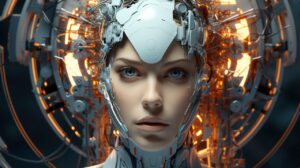What is AI? From the concept of artificial intelligence to its history, applications, and future
These days, the word that appears without fail in the news, YouTube, and corporate work is 'AI'.
But when you actually get asked, “What is AI?” it’s difficult to explain easily.
So today I'm going to explain artificial intelligence very simply and in detail.
We've organized it step by step from the basics so that even those who are new to AI can understand it.
1. What is AI?
AI(Artificial Intelligence) is called 'Artificial Intelligence' in Korean.
Literally, it refers to computer technology that has the ability to 'think, judge, and learn' like humans.
for example,
-
Siri or Bixby will respond when you say “Hello” on your smartphone.
-
AI image generator that automatically draws pictures
-
ChatGPT answers questions quickly
These are all examples of artificial intelligence.
In other words, you can think of it as a computer that works like the human brain.

2. AI-related terms you must know
When you look at AI news, it's hard to understand because there are a lot of difficult terms.
So, I organized frequently used terms so that even beginners can easily understand them.
| Terminology | Meaning (Easy explanation) |
|---|---|
| AI (Artificial Intelligence) | Computer technology that thinks and learns like humans |
| Machine Learning | Technology that allows AI to learn on its own through data |
| Deep Learning | Among machine learning, technology that resembles the brain structure (used for advanced tasks) |
| Neural network | A structure that transmits and analyzes information like the brain |
| Training | The process of repeatedly teaching AI data |
| Pattern Recognition | The ability to find patterns in pictures, sounds, text, etc. |
| Natural Language Processing (NLP) | The technology to understand and interpret human language |
| Reinforcement learning | Learning through trial and error and learning through rewards |
| Supervised learning | Learn by looking at data that has the correct answer |
| Unsupervised learning | Learn by classifying data on your own without any correct answers |
| Generative AI | AI that creates new images, text, and voices |
| Decision tree | A method of making decisions by dividing the options into a tree-like structure |
| AI model | AI brain blueprint with learning results |
| Fine tuning | Additional training of existing AI models for specific purposes |
| Overfitting | A phenomenon in which one becomes accustomed to training data and does not perform well in real situations |
Just knowing these terms will make AI-related news and videos much easier to understand.
3. When did AI begin?
AI has been studied for longer than you might think.
-
In 1950, the genius scientist Alan Turing started by asking the question, “Can machines think?”
-
The term 'AI (Artificial Intelligence)' first appeared at the 'Dartmouth Conference' held in the United States in 1956.
Since then, AI has emerged that can solve simple puzzles or play chess, and now even create paintings, music, and poetry.
4. Representative examples of early AI
Here are some famous examples of early artificial intelligence.
-
ELIZA (1966) http://www.aistudy.co.kr/demo/ELIZA.htm
The world's first interactive program. It was like a simple psychological consultation where you could ask and answer questions with people. -
Deep Blue (1997) https://www.mediaic.co.kr/news/articleView.html?idxno=44677
Chess AI developed by IBM. It surprised the world by beating world champion 'Kasparov'. -
Siri (2011) https://ko.wikipedia.org/wiki/Siri
Apple's voice assistant built into the iPhone was the first time the general public experienced AI in real life.
5. How far has AI developed today?
In the 2020s, AI has made truly remarkable progress.
In particular, as ‘generative AI’ becomes more popular, anyone can easily use it.
| field | explanation |
|---|---|
| ChatGPT, Gemini, Grok, etc. | Used in various fields such as writing, translation, coding, consulting, and studying. |
| Midjourney, ImageFX, etc. | Automatically generate pictures from text (for art/design) |
| Runway, Pika, etc. | Automate video production (YouTube, commercials, movies, etc.) |
| AI tutors (Photomath, Brainly, etc.) | Provides learning assistance functions such as solving math problems and studying English |
Recently, AI is also being used to automatically organize meeting minutes and generate marketing copy.
It has become an era in which even small and medium-sized businesses and the self-employed can easily use it.
6. What does the future of AI look like?
In the future, AI will become a basic infrastructure like ‘electricity’ or ‘internet’.
It is already making a big difference in the following areas:
-
hospital: Used to assist in diagnosis and surgical planning
-
automobile: Self-driving cars drive themselves
-
shopping: AI recommends products that suit my taste
-
education: AI provides 1:1 customized lessons
But at the same time, we must also consider a number of ethical issues, including job changes, privacy, and bias.
So, countries around the world are preparing AI-related laws and guidelines.
7. Why is AI receiving so much attention these days?
1) Because anyone can use it easily.
In the past, only researchers used it, but now AI can be used with just a smartphone app.
2) Because it dramatically increases productivity.
We have entered an era where tasks that used to take an hour can now be completed in 10 minutes using AI.
3) Because you can also participate in creative activities.
AI is becoming an assistant or collaborative tool in a variety of creative fields, including writing, design, and video editing.
New revenue opportunities are also being created.
AI is no longer a ‘technology of the future’.
It is a tool that has already become deeply embedded in our lives and can be of great help if used well.
I hope this article will serve as a useful introductory guide for those who are curious about artificial intelligence.
